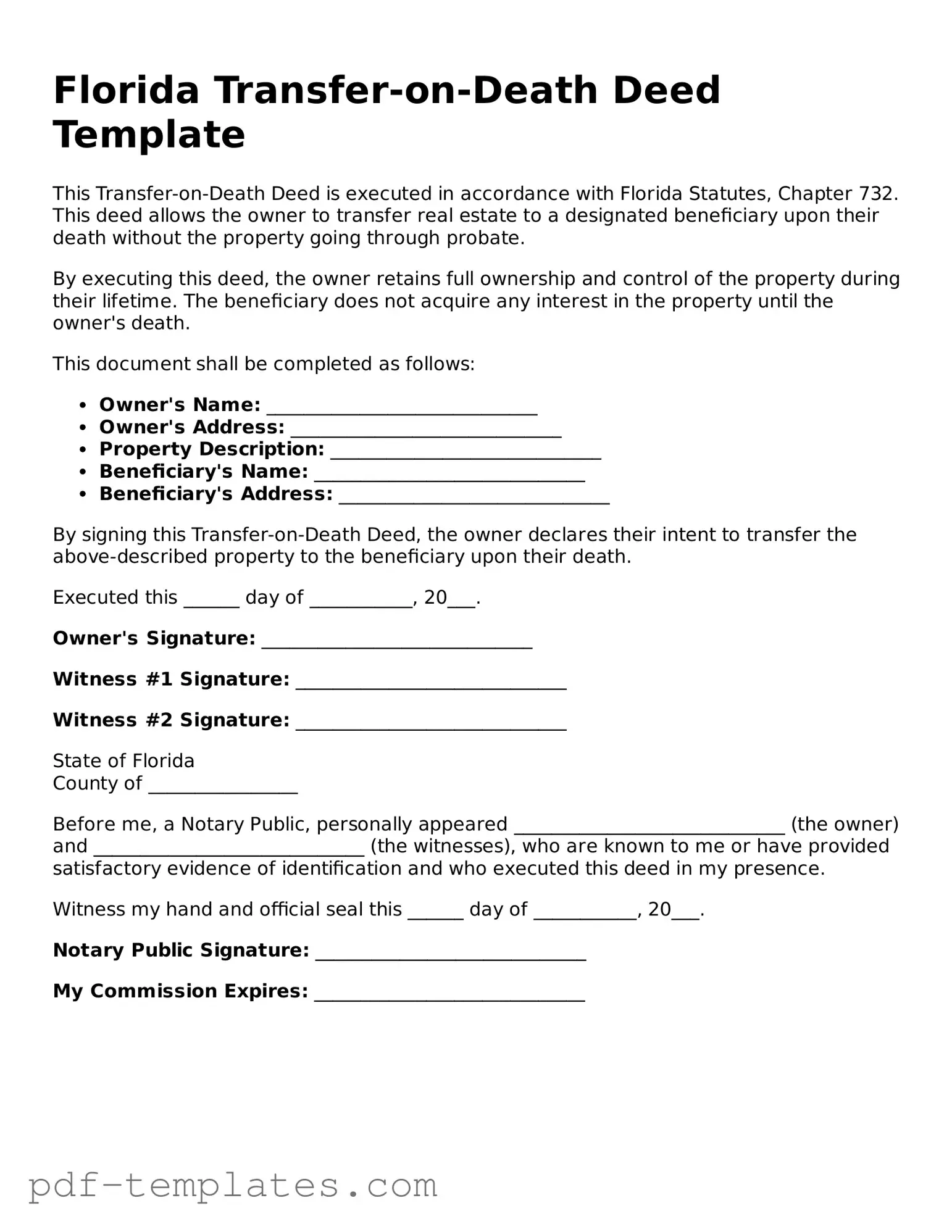The Florida Transfer-on-Death Deed (TODD) is a valuable estate planning tool that allows property owners to transfer real estate to designated beneficiaries upon their death, without the need for probate. This straightforward form enables individuals to maintain control over their property during their lifetime while ensuring a seamless transfer process for their heirs. One of the key advantages of the TODD is that it can be revoked or modified at any time before the owner’s death, providing flexibility in estate planning. Additionally, the form must be executed in accordance with specific legal requirements, including notarization and recording with the county clerk, to ensure its validity. By utilizing the Transfer-on-Death Deed, property owners in Florida can simplify the transfer of their assets, reduce potential disputes among heirs, and ultimately provide peace of mind regarding their estate. Understanding the intricacies of this form is essential for anyone considering its use as part of their estate planning strategy.
